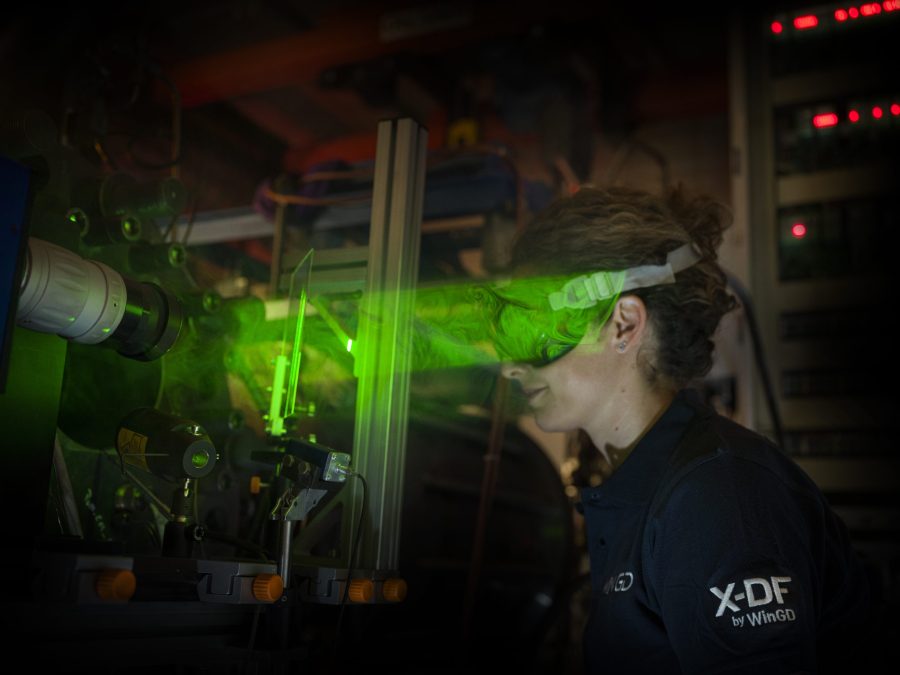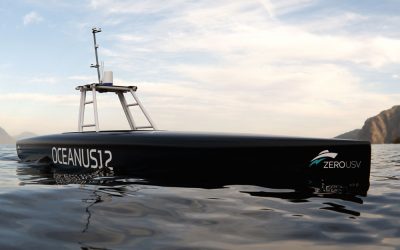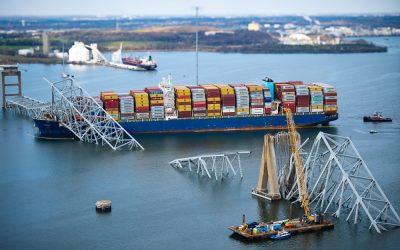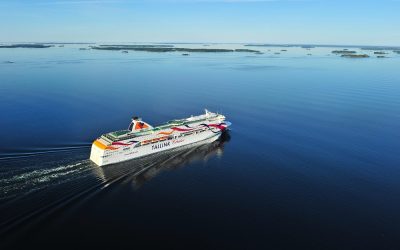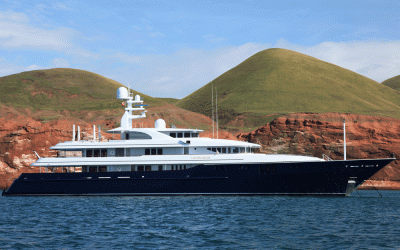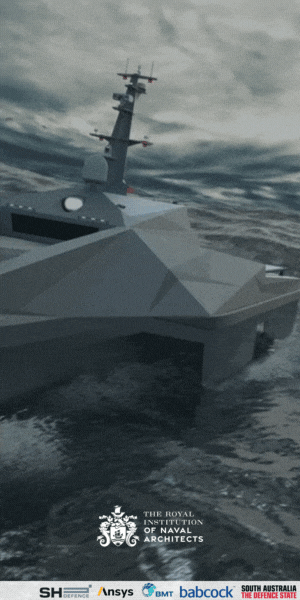Developing safe, reliable and efficient ammonia-fuelled engines demands new research capabilities, writes Dr. Andreas Schmid, General Manager Technology Development, WinGD.
With ammonia emerging as one of the leading clean fuel candidates for decarbonising the shipping industry, WinGD and other engine designers face an important challenge: to design an engine concept that can be applied to both newbuild engines and by retrofit to the existing fleet.
Combined with the simultaneous development of a methanol-fuelled engine concept, this has been a major focus for investment for WinGD. The research draws on WinGD’s own capabilities and facilities and those of engine builder partners in China and Korea.
WinGD announced that it would make commercial engine concepts for methanol and ammonia available from 2024 and 2025 respectively. WinGD and its partners are already well advanced in working on many of the challenges associated with using ammonia as a marine fuel.
Ammonia is a fuel unlike any other previously used in marine engines. It contains no carbon, which is its great advantage when it comes to reducing shipping’s climate impact. Although derived from hydrogen, it is much easier to handle and store and has a higher volumetric energy density, making it potentially much more suitable for use in deep-sea shipping compared to hydrogen.
However, ammonia also has some well-known characteristics that make its use as a ship fuel challenging, including toxicity, corrosiveness and low viscosity. These have a direct impact on the commercial engine concepts. For example, how can an ammonia-fuelled engine be maintained without risking the safety of those responsible for maintenance? How can they safely inspect or disassemble such an engine? And how does the engine room need to be vented to minimise exposure to even low levels of ammonia?
The safety concept is just one area in which basic questions need to be answered. Ammonia both ignites and burns slowly, meaning that the combustion concept in general and ignition or valve timings, need to be considered carefully. This has implications for both the fuel injection and emission abatement concept. The impact of ammonia on the piston running concept also needs investigation to ascertain how ammonia in lube oil affects the oil’s properties, the impact of ammonia contact on the liner or other hot components, and the risk of contamination for other fluid systems such as system oil or cooling water.
The ABC of ammonia
Further basic questions include understanding the emissions abatement concepts that will be needed for a commercial engine concept using ammonia. Emissions will include NOx, which is a potent air pollutant that is regulated against by IMO and the US Environmental Protection Agency. But N2O – or laughing gas – is arguably even more concerning as a strong contributor to global warming. The full emissions profile of ammonia needs to be appreciated before abatement concepts can be considered.
Another important consideration is which combustion process is likely to be needed for ammonia. While the Otto-cycle is arguably less complex – engine hardware would be similar to existing dual-fuel engines – a Diesel cycle engine concept could be more efficient and could benefit from being developed alongside a similar concept for methanol fuel.
One challenge is the lack of models to allow for front loading and computational approaches. To develop an ammonia engine, understanding emission formation is key. A design that fulfils all customer requirements can only be made with reliable computational tools. These tools need to be developed and refined, iteratively checking their reliability at the same time as developing the engine design.
The task of answering these questions and bringing an appropriate commercial engine concept to market can be broadly divided into three stages. By answering questions based on iterative experimentation and simulation, we can arrive at the engine concept. Later in the process, further experimentation helps to refine the concept design and analyse performance further. Finally, with a view to delivering a manufactured product, a range of other tests – including rig testing, single- and multi-cylinder engines and field testing – enable designers to validate the commercial concept.
For example, when developing the injection system, the first step is to identify the best approach to fuel distribution. From there, the requirements of the fuel injection – such as the number and position of injectors, fuel pressure, injector materials and geometry – need to be defined. During this development, the designed injector concept is proven and improved with simulations and later validated with experiments.
Within this framework, the most promising concepts have been selected to maximise efficiency whilst minimising emissions. The field is further narrowed by considering system safety and cost analysis as well as the results of tests.
Research tools
WinGD has drawn on wide collaboration to advance its investigation of ammonia as a fuel and appropriate engine concepts. Collaborators include universities, class societies, engine builders, shipyards and ship operators.
As an example of early-stage research collaboration, WinGD’s proprietary models for ammonia engine concepts have been improved through work with universities to hone modelling of chemical mechanisms[i],[ii],[iii]. Also with the use of university research facilities, WinGD has used an optically accessible test rig to investigate combustion processes in an engine-like environment.
The next stages of research are being undertaken in large part in WinGD’s own facilities and capabilities. WinGD’s Spray Combustion Chamber was developed as part of the Europe-funded HERCULES project. This unique test rig has been used extensively to obtain a better understanding of combustion in large two-stroke diesel engines when applying conventional and alternative marine fuels. This knowledge now serves as a basis for assessing the impact of alternative fuels on combustion characteristics.
By developing the SCC further – for example with the use of high-speed, high-energy laser technology and special optics in combination with line-of-sight methods – the combustion phenomena can be observed in configurations even more representative of actual engine combustion systems. This setup has been used for assessing the impact of clearly distinct alternative fuels on combustion.
WinGD has also developed fuel systems test rigs designed specifically to assess the compatibility of any alternative liquid fuel with existing fuel systems. These test rigs simulate the actual operation of injection systems in service at relevant conditions. Such rigs typically include all key elements of the systems, including fuel pumps, common rail and injection actuation elements as well as the injection valves.
Dimensions and arrangement of components and connecting pipes are selected such that the configuration can be considered as representative of an actual engine. The modular setup allows either simultaneous testing of different design variants or to facilitate the exchange of key components.
On test rigs, the fuel is injected into a chamber and then recirculated to the inlet of the pump. This injection cycle is repeated, at relevant operating conditions, in the range of hundreds of thousands to millions of times.
The injection system performance is monitored to identify any degradation that might occur due to fuel property changes during operation or unfavourable interactions with component materials.
To accelerate fundamental research into fuel flexible engine concepts, WinGD has developed a Single Cylinder Engine (SCE) that will enable rapid iteration and validation before testing is scaled up to multi-cylinder engines. The SCE will be crucial in determining the combustion parameters and emission profile of ammonia and other clean fuels.
The unique test engine relies on expertise from across CSSC; it was designed by WinGD, built by Hudong Heavy Machinery Co and calibrated at the China Shipbuilding Power Engineering Institute (CSPI) in Shanghai. It is now installed within a dedicated building at WinGD’s Engine Research and Innovation Centre (ERIC) in Winterthur. Ammonia and methanol supply are being established and the SCE will be used to test ammonia engine concepts this year.
WinGD’s Global Test Centre in Shanghai is a collaboration with partner company CSPI. It comprises two 2-stroke test engines and several test rigs for the validation of sub-systems such as fuel injection, pumps or gas admission valves. Testing focuses on new fuels and on the further development of WinGD’s low pressure dual-fuel technology.
State of play
WinGD has taken several important steps toward the development of ammonia engines. Software tools have been developed and optimised in collaboration with partners. CFD investigations are focusing on three combustion concepts featuring high- and low-pressure fuel admission. For each combustion concept, fuel admission configurations have been investigated to fully understand the impact on engine design, safety and costs.
First experiments have taken place in the SCC to verify the combustion behaviour and emission formation from the simulations. Once these have been confirmed, the combustion concepts will be tested further, first on the Single Cylinder Engine this year and later on our multi-cylinder test engines.
WinGD has initiated joint development projects with multiple engine builders to prepare for the production of commercial engines, as well as the fuel supply and emissions abatement systems that will be needed to operate engines with alternative fuels. These developments will ensure that WinGD is well placed to deliver the ammonia two-stroke engines that will drive much of the decarbonisation of the deep-sea shipping sector.
Notes
[i] Comparison of pilot fuel ignited premixed ammonia versus methane dual-fuel combustion, S. Wüthrich, P. Albrecht, P. Cartier, and K. Herrmann, Conference Proceedings – Rostock Large Engine Symposium 2022
[ii] Optical investigation and thermodynamic analysis of premixed ammonia dual-fuel combustion initiated by dodecane pilot fuel, S. Wüthrich, P. Cartier, P. Süess, B. Schneider, P. Obrecht and K. Herrmann, Fuel Communications 12 (2022) 100074
[iii] Experimental study of RCCI engine – Ammonia combustion with diesel pilot injection, A. Dupuy, P. Brequigny, A. Schmid, N. Frapolli, C. Mounaïm-Rousselle, 1st Symposium on Ammonia Energy, Cardiff
